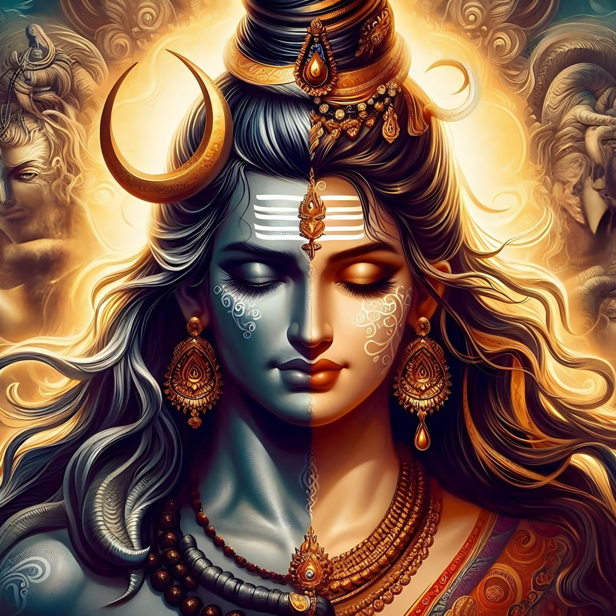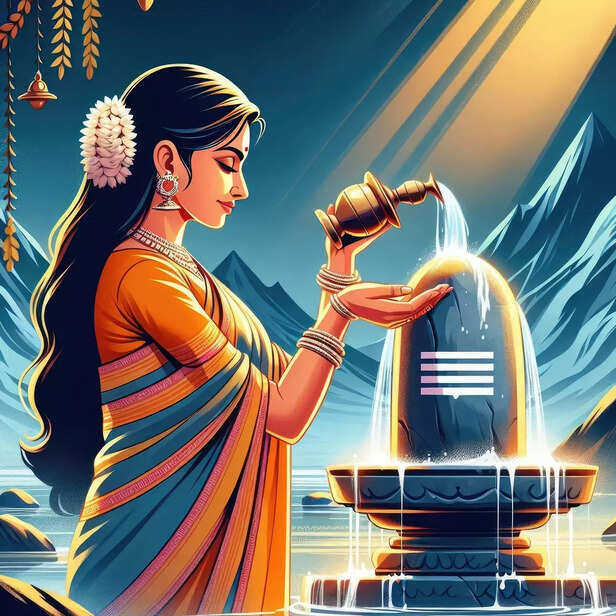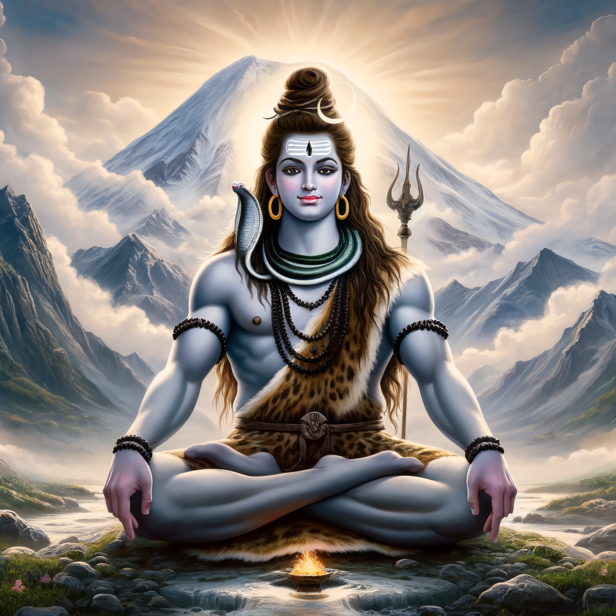5 Promises Shiva Made to Parvati That Hold the Universe Together
Riya Kumari | Jul 31, 2025, 15:22 IST
Shiva and Parvati
( Image credit : Times Life Bureau )
In the cosmic dance of creation and destruction, Shiva is not just the silent ascetic or the fierce destroyer, he is also a husband, a teacher, and a pillar of dharma. His relationship with Parvati is not only personal but also cosmic. Every dialogue between them echoes in the fabric of the universe. Many of their conversations, especially in sacred Shaiva texts like the Shiva Purana, Skanda Purana, and Lalita Sahasranama-stotram commentaries, reveal promises.
In Hindu thought, the divine is not a distant force but a living presence woven into human relationships. One of the most important of these is the union of Shiva and Parvati, not just as husband and wife, but as two complementary principles of the universe: consciousness and energy, stillness and movement, detachment and care. Their conversations, documented in texts like the Shiva Purana, Skanda Purana, Rudra Yamala Tantra, and Devi Bhagavatam, aren’t just mythological dialogues. They contain frameworks for how the world is sustained and how individuals can live in balance. These five vows or promises Shiva makes to Parvati are not romantic lines. They are structural truths, about the nature of power, trust, knowledge, and balance.
1. "Where You Are Worshipped, I Am Present Too"

Source: Shiva Purana, Rudra Samhita
This statement isn’t symbolic, it reflects a theological truth. Shiva acknowledges that his presence is incomplete without Parvati. In places where Shakti is worshipped sincerely, Shiva will always reside. This is the foundation of the Ardhanarishvara concept, Shiva and Shakti as one body. It’s not just a form; it’s a declaration that masculine and feminine energies are interdependent, not hierarchical.
Many temples begin puja with Devi before proceeding to Shiva. Even in yogic and Tantric traditions, invoking Shakti is essential before meditative practices aimed at Shiva-consciousness.
2. "You Are My Equal in Power and Status"

Source: Skanda Purana, also echoed in Devi Mahatmya and Linga Purana
Shiva doesn't treat Parvati as subordinate. In fact, he affirms that without her, he is inert (Shava without Shakti). He gives her the same place in rituals, worship, and cosmic function. In a world where power dynamics often tilt toward control, this is a clear philosophical position: real union is based on respect and equality. It is not poetic, it is foundational dharma.
In rituals like Homa, both Shiva and Parvati are invoked together. Even in household Vedic rituals, invoking the feminine force is considered essential for the completion of any prayer or yajna.
3. "I Will First Share Knowledge With You"

Source: Rudra Yamala Tantra, Shiva Purana
Shiva gives Parvati access to the highest knowledge, mantras, meditative techniques, and the science of moksha (liberation). Most Tantras begin as conversations between them. She is his first listener. The transmission of knowledge requires trust. Shiva’s vow reflects a simple principle: share first with those who live with you, who walk your path, who hold your values. Knowledge isn’t withheld for authority, it’s shared for alignment.
This is why in guru-disciple traditions, the inner teachings are often passed on through strong personal relationships of trust and responsibility, modeled after Shiva and Parvati’s dialogues.
4. "I Will Take Any Form to Find You Again"

Source: Shiva Purana, Kumarasambhavam (Kalidasa)
After Sati's death, Shiva withdrew from the world. But when she reincarnated as Parvati, Shiva tested her devotion and eventually accepted her again. This shows a commitment that transcends one lifetime or identity. This is not about emotional longing. It’s a theological statement: the bond between soul (Shiva) and power (Parvati) is not limited by time or form. It re-establishes itself again and again.
Pilgrimage sites like Triyuginarayan in Uttarakhand, where Shiva and Parvati are believed to have married—are still visited by couples seeking lasting union. The message is simple: what is meant to return, does.
5. "Through You, the World Will Be Protected"

Source: Devi Bhagavatam, Lalita Mahatmya, and Shiva Purana
Shiva tells Parvati that she will take forms like Durga, Kali, and Annapurna, not just for worship, but for active intervention when dharma is at risk. This isn't flattery, it’s a doctrinal truth: power (Shakti) is the force that maintains and protects. Shiva may dissolve, but it is Parvati who restores, nourishes, and defends.
Navratri, Durga Puja, and even Diwali rituals reflect this truth. Women in many communities are seen as symbolic embodiments of this protective Shakti and are honored accordingly.
Conclusion:
These promises aren’t abstract metaphors. They are integral to how Hindus understand balance—between power and wisdom, devotion and independence, discipline and care. Shiva’s commitments to Parvati model how any relationship, divine or human, can be rooted in equality, trust, and shared purpose. At a time when most relationships struggle with control, insecurity, or neglect, these five principles offer a clear roadmap:
Shiva’s words are not just for Parvati. They are for anyone seeking truth in their relationships, with others, and within themselves.
1. "Where You Are Worshipped, I Am Present Too"

Shiva
( Image credit : Pixabay )
Source: Shiva Purana, Rudra Samhita
This statement isn’t symbolic, it reflects a theological truth. Shiva acknowledges that his presence is incomplete without Parvati. In places where Shakti is worshipped sincerely, Shiva will always reside. This is the foundation of the Ardhanarishvara concept, Shiva and Shakti as one body. It’s not just a form; it’s a declaration that masculine and feminine energies are interdependent, not hierarchical.
Many temples begin puja with Devi before proceeding to Shiva. Even in yogic and Tantric traditions, invoking Shakti is essential before meditative practices aimed at Shiva-consciousness.
2. "You Are My Equal in Power and Status"

Shiv
( Image credit : Pixabay )
Source: Skanda Purana, also echoed in Devi Mahatmya and Linga Purana
Shiva doesn't treat Parvati as subordinate. In fact, he affirms that without her, he is inert (Shava without Shakti). He gives her the same place in rituals, worship, and cosmic function. In a world where power dynamics often tilt toward control, this is a clear philosophical position: real union is based on respect and equality. It is not poetic, it is foundational dharma.
In rituals like Homa, both Shiva and Parvati are invoked together. Even in household Vedic rituals, invoking the feminine force is considered essential for the completion of any prayer or yajna.
3. "I Will First Share Knowledge With You"

Mahadev
( Image credit : Unsplash )
Source: Rudra Yamala Tantra, Shiva Purana
Shiva gives Parvati access to the highest knowledge, mantras, meditative techniques, and the science of moksha (liberation). Most Tantras begin as conversations between them. She is his first listener. The transmission of knowledge requires trust. Shiva’s vow reflects a simple principle: share first with those who live with you, who walk your path, who hold your values. Knowledge isn’t withheld for authority, it’s shared for alignment.
This is why in guru-disciple traditions, the inner teachings are often passed on through strong personal relationships of trust and responsibility, modeled after Shiva and Parvati’s dialogues.
4. "I Will Take Any Form to Find You Again"

Lord shiva
( Image credit : Unsplash )
Source: Shiva Purana, Kumarasambhavam (Kalidasa)
After Sati's death, Shiva withdrew from the world. But when she reincarnated as Parvati, Shiva tested her devotion and eventually accepted her again. This shows a commitment that transcends one lifetime or identity. This is not about emotional longing. It’s a theological statement: the bond between soul (Shiva) and power (Parvati) is not limited by time or form. It re-establishes itself again and again.
Pilgrimage sites like Triyuginarayan in Uttarakhand, where Shiva and Parvati are believed to have married—are still visited by couples seeking lasting union. The message is simple: what is meant to return, does.
5. "Through You, the World Will Be Protected"

Bholenath
( Image credit : Pixabay )
Source: Devi Bhagavatam, Lalita Mahatmya, and Shiva Purana
Shiva tells Parvati that she will take forms like Durga, Kali, and Annapurna, not just for worship, but for active intervention when dharma is at risk. This isn't flattery, it’s a doctrinal truth: power (Shakti) is the force that maintains and protects. Shiva may dissolve, but it is Parvati who restores, nourishes, and defends.
Navratri, Durga Puja, and even Diwali rituals reflect this truth. Women in many communities are seen as symbolic embodiments of this protective Shakti and are honored accordingly.
Conclusion:
- Respect is not optional.
- Knowledge must be shared.
- Power is mutual, not competitive.
- Reconnection is always possible.
Shiva’s words are not just for Parvati. They are for anyone seeking truth in their relationships, with others, and within themselves.
